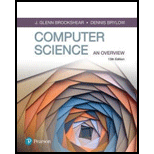
Concept explainers
Explanation of Solution
“Yes”, there comes a point at which the service charges restrict the access to the economy.
Automated Banking System:
The banking system is becoming automated with the advent of technology. The use of credit/debit cards, internet banking, mobile banking, electronics and transfer of funds has paved way towards cashless economy.
- In earlier times, if you withdraw money multiple times in a month from the bank, there were no extra charges for the same.
- In modern times, there is service charge for using ATM card. For the transactions above the minimum number, charges are levied for each exceeded transaction.
- For payments using internet banking, there are services charges for buying an item. Bank customers do need to have minimum amount of balance in their account, in order to not to get penalized.
- As everything is becoming more dependent on cashless economy, the exceeding service charges are unjustifiable. There needs to be some control over the amount of charge levied on the customers by the banks.
- There are many who can’t keep minimum account in their balance. If the charges keep increasing over every service which was earlier free, it would restrict the individual access to economy.
If the employers only pay by check and the financial institutions charge for the check, it is highly “unfair” for the customer or consumer.
Explanation:
- Stringent laws need to be enforced to safeguard the rights of the employee.
- Either there has to be alternate mode of payment to be made available by the employer like direct deposit or cash payment or payment by draft or there has to be some regulation on the banking system so that system is fair to the user.
Available of choice for Direct Deposit Scheme or Check:
It is “unfair”, to employee to offer only one mode of payment.
- Direct deposit is an electronic funds transfer (EFT) that lets paychecks directly into checking or savings account.
- Direct deposit can save you time as well as make sure your payroll is secure and organized. Employees can increase their personal savings and eliminate the hassle of running to the bank to deposit a paycheck every payday.
- However, some employees prefer physical paycheck or cash. Just as forgers can easily create and cash fake checks, hackers can get into the ACH system and quickly make huge withdrawals from an employer's bank, to the tune of perhaps hundreds of thousands of dollars, before the crime has been detected.
- Some employees have personal circumstances, which are often related to debt collection, child support and divorce. And it is a drawback that makes a payroll check preferable to direct deposit.
There are federal laws on direct deposit, but states can also make regulations. The Electronic Fund Transfer Act (EFTA) protects employers and employees who use features like direct deposit. Federal law says that employers can make direct deposit mandatory.
However, one of the following conditions must be met:
- The employee must be able to choose the bank for direct deposit.
- If the employer chooses the bank, they must offer another form of payment for the employee, such as a paper check
Want to see more full solutions like this?
Chapter 0 Solutions
Pearson eText for Computer Science: An Overview -- Instant Access (Pearson+)
- Considering the TM example of binary sum ( see attached)do the step-by-step of execution for the binary numbers 1101 and 11. Feel free to use the Formal Language Editor Tool to execute it; Write it down the current state of the tape (including the head position) and indicate the current state of the TM at each step.arrow_forwardI need help on inculding additonal code where I can can do the opposite code of MatLab, where the function of t that I enter becomes the result of F(t), in other words, turning the time-domain f(t) into the frequency-domain function F(s):arrow_forwardI need help with the TM computation step-by-step execution for the binary numbers 1101 and 11. Formal Language Editor Tool can be used to execute it; Write it down the current state of the tape (including the head position) and indicate the current state of the TM at each step;arrow_forward
 C++ Programming: From Problem Analysis to Program...Computer ScienceISBN:9781337102087Author:D. S. MalikPublisher:Cengage Learning
C++ Programming: From Problem Analysis to Program...Computer ScienceISBN:9781337102087Author:D. S. MalikPublisher:Cengage Learning Principles of Information Systems (MindTap Course...Computer ScienceISBN:9781285867168Author:Ralph Stair, George ReynoldsPublisher:Cengage Learning
Principles of Information Systems (MindTap Course...Computer ScienceISBN:9781285867168Author:Ralph Stair, George ReynoldsPublisher:Cengage Learning Fundamentals of Information SystemsComputer ScienceISBN:9781305082168Author:Ralph Stair, George ReynoldsPublisher:Cengage Learning
Fundamentals of Information SystemsComputer ScienceISBN:9781305082168Author:Ralph Stair, George ReynoldsPublisher:Cengage Learning Operations Research : Applications and AlgorithmsComputer ScienceISBN:9780534380588Author:Wayne L. WinstonPublisher:Brooks ColeProgramming Logic & Design ComprehensiveComputer ScienceISBN:9781337669405Author:FARRELLPublisher:Cengage
Operations Research : Applications and AlgorithmsComputer ScienceISBN:9780534380588Author:Wayne L. WinstonPublisher:Brooks ColeProgramming Logic & Design ComprehensiveComputer ScienceISBN:9781337669405Author:FARRELLPublisher:Cengage





